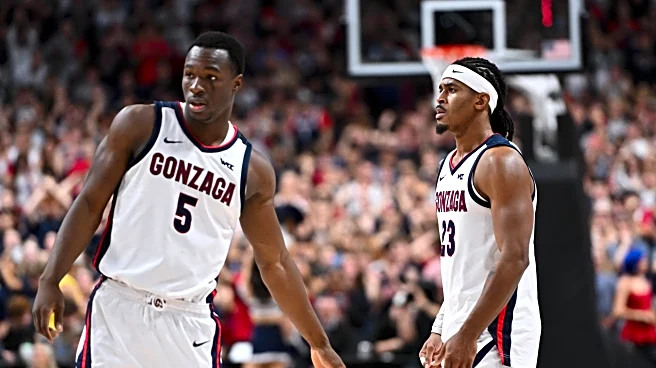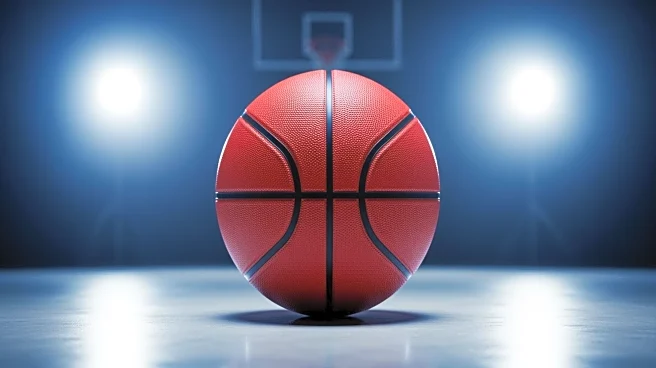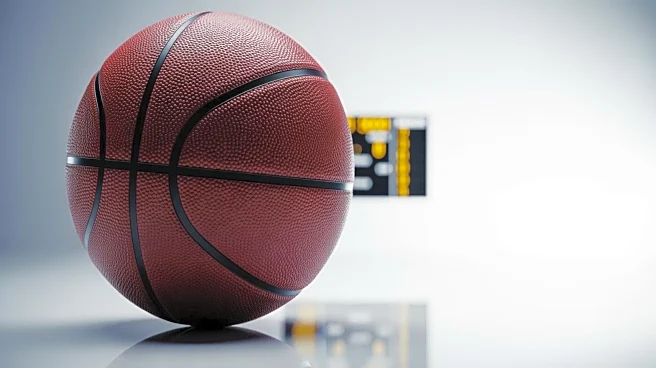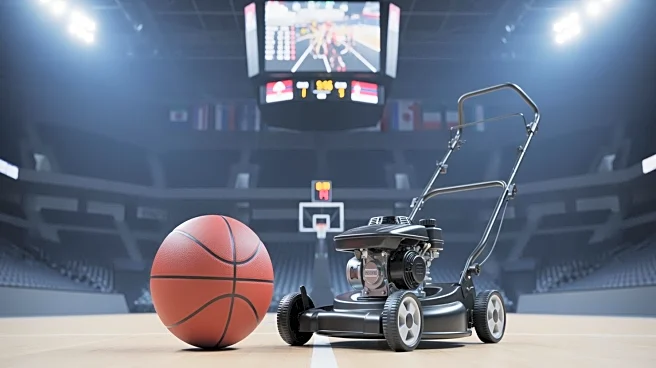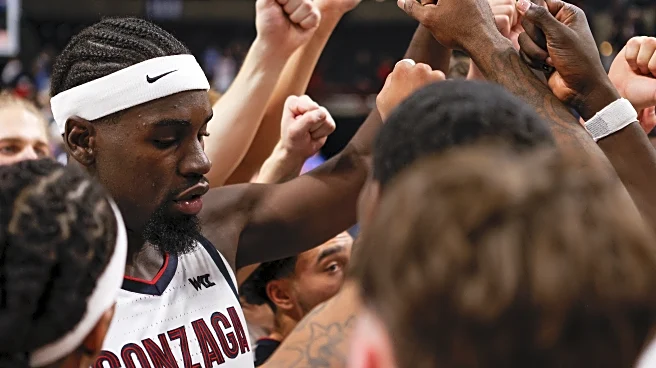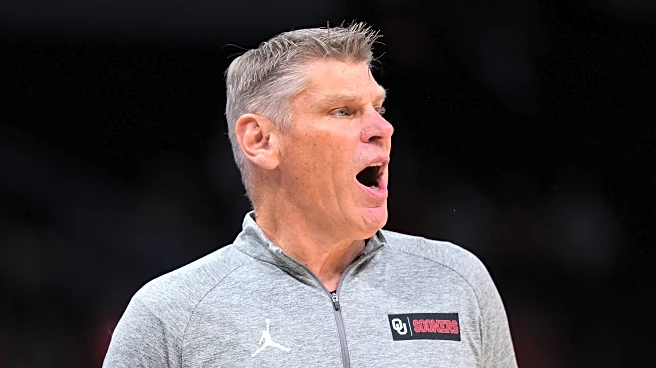Gonzaga beat Oklahoma by 15 on Saturday and looked like a team with a ridiculous ceiling still figuing out how all the pieces fit together. The important stuff was there: Graham Ike controlled the paint,
Braden Huff ran secondary actions, and the defense absolutely bottled up Oklahoma from all points on the floor. Gonzaga’s depth and versatility simply overwhelmed the Sooners and systematically stripped them one-by-one of their contingency plans on both sides of the floor.
Gonzaga’s activity on the glass created extra possessions and the half court defense reduced Oklahoma to late clock decisions. Polls released on Monday reflected that level of control as Gonzaga moved to No. 19 in the country.
Next comes Gonzaga’s second early-season mettle-test: the Creighton Bluejays. Greg McDermott’s newly Kalbrenner-less squad rolls into the McCarthy Athletic Center for a Tuesday night 7:00 PM tipoff. Coverage will be provided by ESPN.
Meet the Bluejays
Creighton is a program built on tempo, spacing, and veteran structure, a profile that mirrors how Gonzaga played when Ryan Nembhard ran the show. It’s no coincidence that Mark Few went and got the younger Nembhard out of the transfer portal after his two seasons at Creighton considering his style of play is exactly what the Bulldogs have tended to favor. The matchup with Creighton provides our next meaningful reference point for Gonzaga’s development and will reveal how this roster handles a team that values precision over chaos.
Creighton remains at No. 23 in the AP and arrives with the same offensive identity every McDermott team carries: move the ball before the defense can react and let the spacing stretch a defense and force quick decisions. They do it better than any program Gonzaga will see this month.
Iowa transfer Owen Freeman has been the main storyline for Creighton since the loss of Ryan Kalkbrenner to the NBA draft. Consistently ranked as one of the best bigs in the country, Freeman gives the ‘Jays a real interior piece on both sides of the floor. He scored 19 points in 19 minutes in the opener against South Dakota and finished 9 for 11 from the field. He’s a traditional back-to-the-basket big with good vision and a nice touch around the rim. Ike and Huff (and Diagne???) will have their hands full containing Freeman one-on-one, and it’ll be up to Warley and Tyon Grant-Foster to make sure their help-side defense doesn’t leave shooters with too much space to operate on the perimeter.
Literally beside Owen Freeman, Jackson McAndrew plays in the frontcourt as a shooter who can pull a defender away from the paint, and the moment he sprints into a catch the geometry of their offense shifts, which creates easier driving lanes for the guards and a steady stream of kick out threes that reward patience. It’s an offensive look Zag fans will be familiar with because it’s more or less exactly what the Bulldogs ran last year.
The only clear weakness for Creighton comes on the glass, and it’s a big weakness. Despite the lopsided scoreboard versus South Dakota, Creighton never controlled the rebounding numbers with significant authority. By way of reference, Graham Ike grabbed 11 rebounds against Oklahoma while Freeman and McAndrew combined for 11 against South Dakota. Everything else looks like Bluejay basketball. Especially the dead-eyed sharpshooting of (other) Iowa transfer, Josh Dix.
How Gonzaga Beats Creighton
When Greg McDermott’s teams flow, they flow beautifully. Against South Dakota, Creighton assisted on 20 of 37 made field goals and shot 50% from the floor. They scored 54 points in the paint, ran for 24 fast break points, and finished 8 dunks. When the rhythm is there, the game looks effortless.
But their season opener also exposed the exact pressure points Gonzaga can attack. South Dakota grabbed 21 offensive rebounds against the Bluejays and surrendered 48 paint points even with star transfer center Owen Freeman on the floor. McDermott said afterward that his team lacked physicality and struggled with basic help concepts in the half-court defense, including recognizing when to stay attached to shooters and when to collapse to the paint.
Gonzaga can tilt this game by refusing to let Creighton operate in a clean half court script. Mario Saint Supery, Braeden Smith, Adam Miller, and Emmanuel Innocenti need to pressure the ball early, deny the first action, and push immediately off every defensive rebound. Creighton used 12 players in the opener because the rotation is unsettled. Owen Freeman scored 19 points but recorded only 1 defensive rebound and McDermott admitted he is not where he needs to be yet in conditioning or defensive physicality. Gonzaga has to make him run every time the ball changes hands.
This is where Jalen Warley can change the game. Warley is a tempo manipulator who uses his ability to read rotations to erase ball screens and deny flow. Creighton’s offense wants structure. Warley is a structure remover. Once the ball stalls, the possession devolves into isolation or late clock creation, which produces long rebounds and transition chances.
The moment Gonzaga gets a stop, it needs to run. Gonzaga has the depth to rotate fresh handlers and bigs, forcing Creighton to guard with tired legs. Every possession that becomes random, unscripted, and chaotic favors Gonzaga. The blueprint is simple: do not let Creighton get comfortable. Take away rhythm and turn every defensive rebound into a runway.
Storylines to Watch
The Diagne Factor
Ismaila Diagne is the wildcard. In Gonzaga’s opener against Texas Southern he grabbed 6 rebounds in 11 minutes and went 1-2 from the field. Yet against Oklahoma he played less than 1 minute even as Graham Ike eventually fouled out (thanks to a bizarre technical foul not captured by the broadcast) and Braden Huff finished with 3 fouls.
Creighton feasted in the paint during its opener, and Gonzaga cannot afford long stretches without a true rim protector on the floor. Mark Few may prefer the speed and switching flexibility of Jalen Warley or Tyon Grant Foster at the 4 while cycling Ike and Huff at the 5, but Diagne’s length gives Gonzaga something no one else offers: instant rim protection and near-guaranteed rebounds. If Creighton starts getting downhill or if foul trouble reappears, Diagne becomes a solution Gonzaga has barely used.
The Point Guard Arms Race (Part 3)
Through the first 2 games of the season, Braeden Smith is 1-5 from three, with 0 free throw attempts, while Mario Saint Supery is 2-6 from deep and has already taken 7 free throws (and drawn plenty of key fouls on the perimeter). There is no debate about Smith’s value as an organizer. He controls tempo, moves defenders with his eyes, and gets Gonzaga into its actions with a composure that resembles the structure once supplied by the Nembhard bros. The problem is that—at least for the time being—the team seems to surge when Mario enters, due to his aggression and distribution skills. If Smith wants his minutes to remain unquestioned, the answer is not to become Mario, but to add enough scoring aggression and perimeter command to his bag. Gonzaga needs the half-court offense to function seamlessly with Smith on the floor, which means the threes have to fall and the possessions have to start with intent. When Smith shoots with confidence and runs the offense decisively, the point guard decision gets a little less lopsided.
Can a guy get a deep ball?!
Three-point shooting has been a point of concern for the Zags since before the season even began. Unfortunately, early indicators have not been positive. Gonzaga is 13 of 44 from deep in the regular season, and if you include the exhibitions they are 24-71 (good for 33.8%). The shot volume is there. The efficiency is not. Until Gonzaga’s strategy of letting Adam Miller and Steele Venters pull the trigger when comfortable falls into place, Gonzaga needs its secondary shooters to become real threats. Combined, Gonzaga’s point guards are 2-11 from deep so far. Huff is 0-3 and Ike is 0-4. The offense cannot stretch the court if only Miller and Venters can shoot.
Final Thoughts:
Rarely are we treated to top-25 matchups this early in the seaoson, and its been especially rare to get them in the Kennel. Gonzaga has the depth, defensive disruption, and lineup flexibility to dictate tempo, against Creighton but that only matters if they use it with intent. The keys are simple: protect the rim, get control and decisiveness from the point guard spot, and hit enough threes to stretch the floor. If Gonzaga gets rebounds, controls the paint, and gets real perimeter production, they turn Creighton’s structure into a chase. If they hesitate, Creighton’s rhythm can take over. Early season or not, we’ve got a chance to once again see the boys take another step forward on Tuesday.
